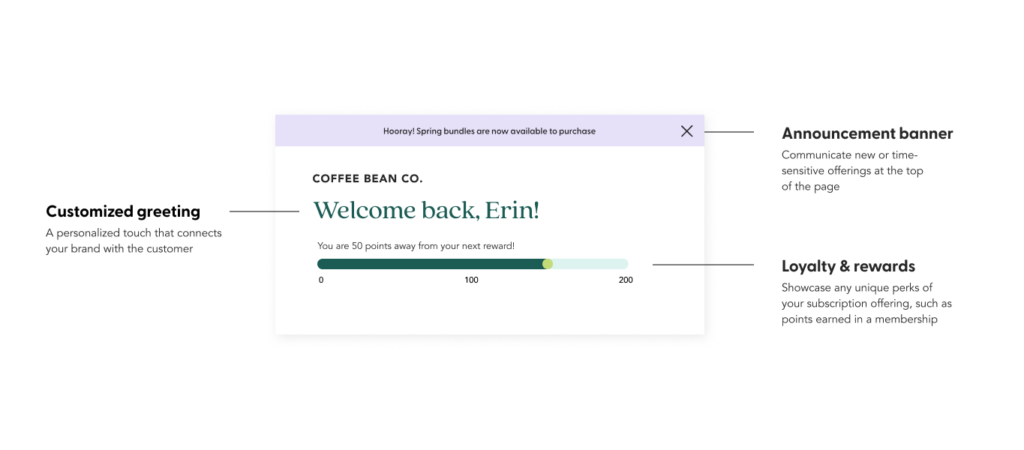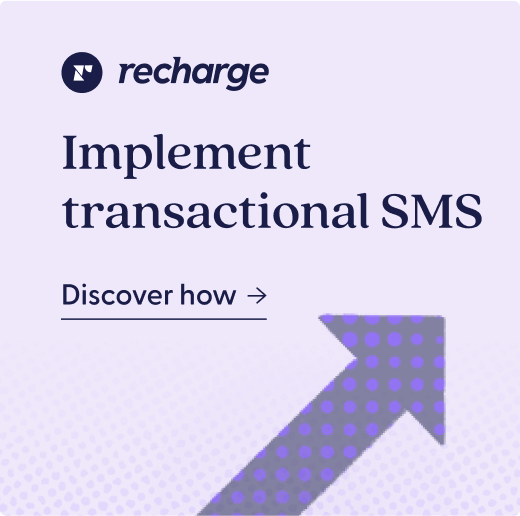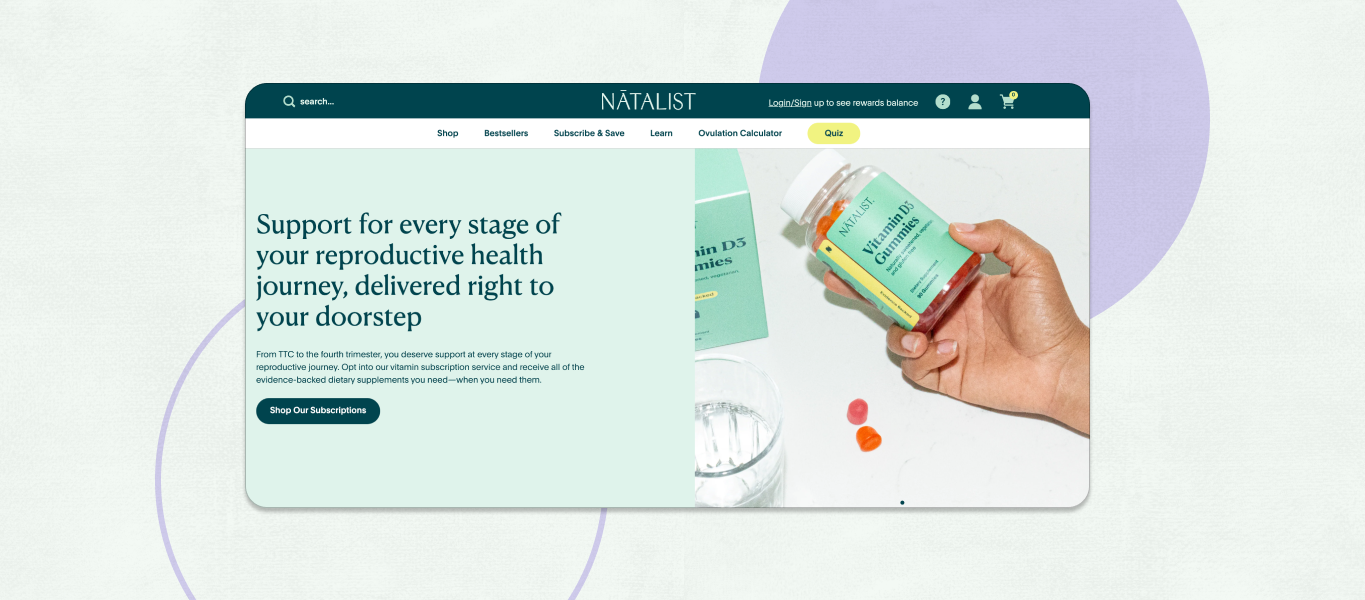More and more, customers are prioritizing fantastic shopping experiences when choosing to make a purchase. According to a customer experience report by PWC, 59% of customers in the U.S. will walk away after multiple bad experiences, and 17% will walk away after just one bad experience.
It’s clear that for businesses today, customer satisfaction is paramount to retention. But it’s less clear how to measure customer satisfaction—or how to earn it and keep those customers coming back again and again.
In this post, we’ll dive into strategies your business can use to achieve customer satisfaction and keep your customers coming back for more. We’ll also explain the process for measuring customer satisfaction and explore the impact that high customer satisfaction can have on your bottom line.
The role of customer satisfaction in ecommerce
So—why is customer satisfaction important?
Satisfied customers can have a highly positive impact on the health of your ecommerce business. When customers have a positive experience with not only your products and services, but also with other aspects of your business (including your Customer Success team, any apps they use, etc.), they show higher levels of customer loyalty.
This not only makes them more likely to return to your business and make another purchase, but also makes them more likely to be brand advocates for you. They may be more inclined to endorse your business through word-of-mouth marketing, helping you acquire more customers, as well.
This can mean creating a more valuable customer base that results in higher overall profitability for your business.
5 strategies for improving customer satisfaction
The specific strategies for improving your customer satisfaction levels vary depending on your products or services, business resources, and unique customer base. However, there are a variety of tactics that are applicable to many businesses. These include:
1. Providing a user-friendly website & shopping experience
As an ecommerce business, one of the most important areas to invest in is your website. This is where new customers gain their first impression of your business, and where repeat customers return to continue doing business with you.
Research shows that ecommerce customers have low patience for a poor website experience. A major factor here is site loading speeds: 53% of mobile website visits are abandoned if the site takes longer than 3 seconds to load, according to research by Google.
With mere moments to capture your shoppers’ attention, it’s crucial to make it count. Ensure your website is easy to navigate and simple to search, that pages load quickly, and that products are organized intuitively. The more seamless you can make your website experience, the more satisfied your customers will be.
2. Offering a variety of high-quality products or services
Your customers’ satisfaction depends on their ability to find the products and services they’re looking for. What’s important here is to ensure they have the right variety and quantity of options to choose from.
Finding this perfect assortment all depends on your product vertical. The key is to ensure that customers have enough options so that they find the match they’re seeking, but not so many that they become overwhelmed.
Some verticals, such as Food & Beverage, can benefit from a greater number of product variants, while some may benefit from less. Research and conduct customer surveys to determine the right options for your business—and be sure to refresh product offerings as needed to keep excitement levels high.
3. Providing fast and reliable shipping & delivery
Two of the most important aspects of your customer experience are your shipping and fulfillment. No matter how beautifully designed your website is, how effective your marketing strategy is, or how captivating your products are, if they aren’t delivered on time, you’ll have unhappy customers on your hands.
First, be sure to invest in the proper shipping tools and integrations for your business. But beyond this, it’s also crucial to clearly communicate your shipping policies clearly to your customers to manage their expectations.
Send them communication via email or text when their orders ship, or if an order is running late, and make your shipping timeline clear from the beginning so shoppers know exactly when to expect their delivery.
4. Offering excellent customer service & support
No matter how smoothly things are running, there will always be certain circumstances where customers will need to adjust their orders or need help solving an issue. In these instances, it’s crucial to deliver exceptional customer service to turn a potentially negative experience into a positive one and prevent voluntary churn.
Be sure to prioritize customer success, investing in your Customer Support team and ensuring that they have the tools and resources they need to solve issues quickly and effectively. But beyond this, make sure that your customers can easily manage their own subscriptions.
What does this mean, exactly? Empower your customers to easily skip an order, swap products, update their shipping and payment information, and more—all without having to engage your Support team. Consider strategies like launching transactional SMS or optimizing the customer portal to ensure your shoppers can update their orders at various points in their journey.
This can greatly reduce the volume of support tickets your team receives, allowing them to focus their attention on more complex or challenging tickets. Meanwhile, your customers will be able to solve their problems more quickly and easily, boosting their satisfaction.
5. Finding opportunities to surprise & delight your customers
With businesses increasingly competing with each other on the quality of their customer experience, it’s become the norm to exceed customer expectations—not just meet them. In other words, you should be providing value beyond just your products.
This value can come in many forms, including:
- Beautiful packaging or a pleasing unboxing experience
- A community forum or other way to connect with your brand and other customers
- Discounts or gifts to commemorate special moments, like a birthday or anniversary with your company
- Special content, like a podcast or blog, that entertains or educates customers
Research what matters most to your customers, and what value-adding strategies your competitors may be using, to determine the best methods for your business.
Best practices to keep customers coming back
The ideal strategies for improving your business’s customer satisfaction will depend on the products and services you sell. However, there are several best practices to consider, such as:
Offering personalized recommendations
Customers find enormous value in personalization—in terms of communication, and, perhaps more importantly, in terms of recommendations. After all, when you effectively tailor your product suggestions to your customers’ needs and preferences, you save them time and effort sifting through your site and get them the right products more quickly.
The key to personalization is data. Gather information on customers’ purchase history, then recommend them related items that they may be likely to enjoy. You can also use customer segmentation to separate your customer base into different groups by common traits, and from there, recommend relevant products to each group.
Providing loyalty rewards or incentives
Just like in any relationship, showing your appreciation with your customers can go a long way. Recognize their loyalty to your brand by providing them with rewards for behaviors you want to encourage, like repeat purchases, signing up for a subscription, or hitting a certain order minimum.

For example, you might send your customers a free gift after they’ve been subscribed to your brand for one year. Or, you might offer your customers a special discount once they receive their tenth subscription box with you. Personalize your communication around these rewards to enhance their value and make them feel even more special to the recipients.
Providing value-adding content or experiences
The extra value you can provide your customers isn’t limited to free gifts and discounts. Often, you can provide deep meaning and help customers get more out of your products or services through content or experiences.
What content you provide depends on the products you offer. If you’re a meal kit company, you might consider publishing blog content that contains recipes to use up any leftover ingredients from that week’s shipment. Or, you might put thought and care into your packaging and unboxing experience, perhaps using sustainably-sourced materials or wrapping items so they look and feel like gifts.

Certain types of products might benefit from a community aspect, where customers can connect with each other and to your brand. For example, an audiobook company might decide to launch an online forum for subscribers that serves as a virtual book club.
By knowing what your customers value and infusing those elements into the shopping experience, you demonstrate that you understand what they care about and prove your value to them.
Using data & analytics, such as customer feedback, to measure customer satisfaction
Regardless of the strategies you choose to boost satisfaction for your ecommerce business, it’s critical to measure customer satisfaction over time. This way, you can identify any trends in behavior or patterns in your key performance indicators, which will allow you to hone your strategy more effectively.
While customer satisfaction data cannot be determined with a single metric, businesses can assess how well they are satisfying their customers by approaching this concept holistically and with multiple metrics, including customer lifetime value (LTV), customer retention, repeat purchase rate, and more.
Additionally, you can conduct a post-purchase customer satisfaction survey that asks shoppers a question like “How satisfied are you with your order?” to help you understand your business’s customer satisfaction score. Or, you can conduct customer effort score surveys by asking questions about ease-of-use, either with your customer experience, support interactions, or products in general.
Whichever method you choose, be sure to approach customer satisfaction from a variety of angles, and track a combination of metrics over time. This will allow you to understand patterns in your performance and grow with your customers, even as their needs change and evolve.
Customer satisfaction leads to loyalty, which boosts retention & LTV
In today’s highly competitive market, prioritizing customer satisfaction in ecommerce can be one of the most effective ways to boost retention, LTV, and more.
By taking a holistic approach to customer satisfaction, measuring it with a variety of different metrics, and collecting customer feedback around certain products or campaigns, you can gain a deep understanding of what matters most to your shoppers in order to keep them with your business for longer.
At every step in the customer journey, be sure to personalize the experience and make it convenient, fast, intuitive, and enjoyable. By implementing the strategies in this post, you can improve customer satisfaction and retain customers more effectively.



